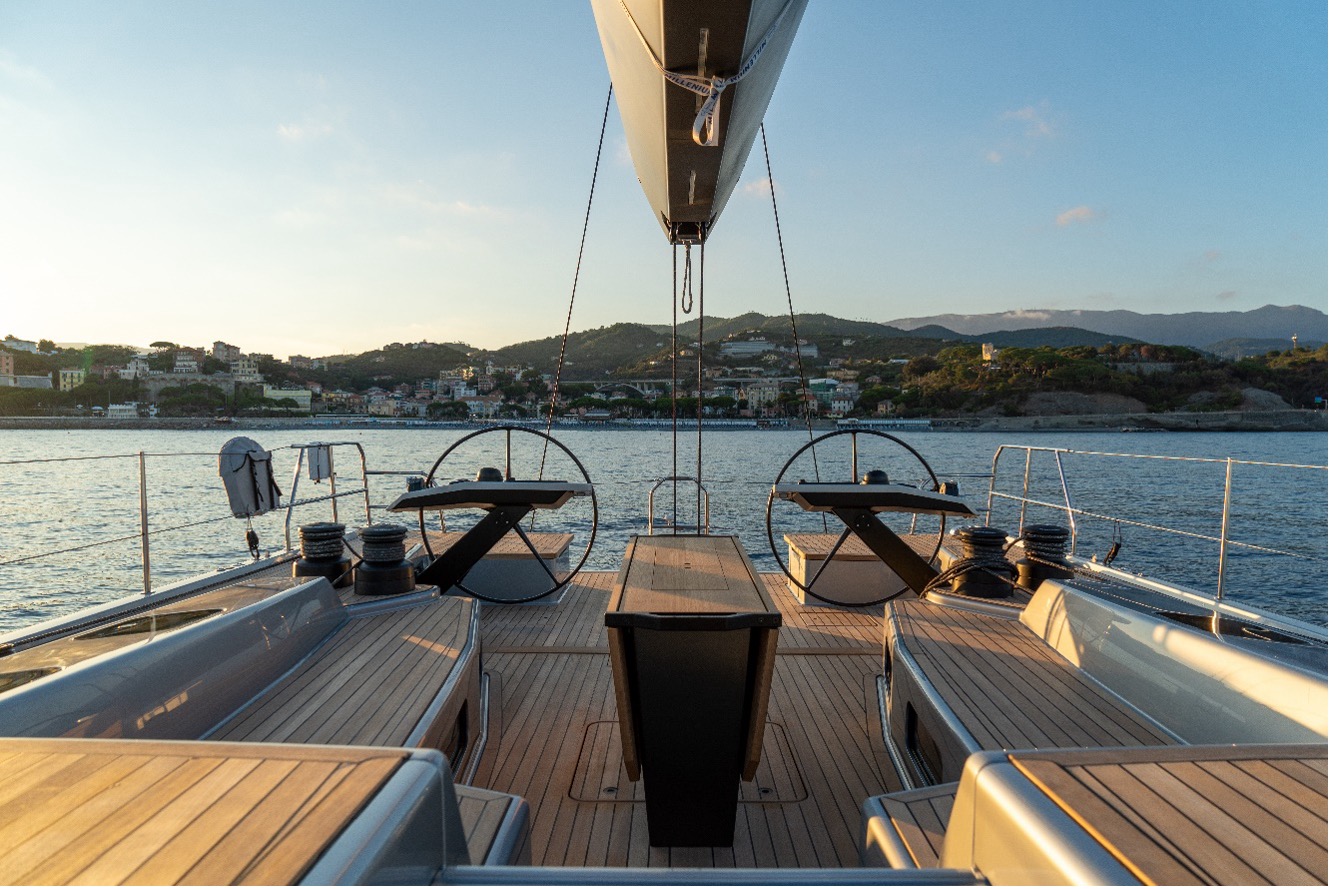Leggi l’articolo in italiano
Only few instruments are so delicate as the mainsail furler.
Low performances, poor regulation, the risk that the mechanism can get blocked are the main pretexts used by all those who don’t love this system.
However, the mainsail furler has several supporters because it’s very simple to use and it allows to manage the mainsail even with a reduced crew on board.
Anyway, despite its advantages, this equipment must be used properly, in the respect of some precautions.

In summary, its use consists in a rope which runs and another one which pulls.
The rope fixed in the mainsail clew cringle, where foot and leech meets and which works as outhaul, is hauled, while the little rope running around the inner mechanism of the mast, runs. The two moves must be made at the same time, so that the mainsail can exit gradually. When all the sail is out, we have to block the rope going out of the mast (in the picture, the forward grey one) while hauling the other one (in the picture, the white and red rope on the left) in order to regulate the foot.
Vice versa, when we wind the mainsail up, we have to haul the rope in the inner mechanism of the mast and let the outhaul run, always gradually.
It’s necessary to observe some little precautions in order to avoid any possibility of jam.
First of all, the sailing point. If wind is weak, you can do the manoeuvre even on the stern while moving forward in order to reduce pressure. But the best sailing point is close-hauled, with an open boom and a spilled mainsail. You don’t have to put the bow to the wind because there are no carriages under pressure.
Even tacks are important, depending on the position of the split. If it is on the right, like in the boat on which we are sailing in these pictures, we have to keep tacks on the left and not forward like in the pictures.
As regards foot and leech, we have to maintain an uniform tension. This is very important especially if we are rolling because the risk is that some wrinkles can form and later make the manoeuvre more difficult. If the leech line is too hauled, it can obstruct the manoeuvre.
The boom must be supported by the uphaul and it must be orthogonal to the mast. The vang must keep the right leech tension.
Anyway, if we feel excessive stress during both the furling and the opening phase, we mustn’t force the rigging. Every move must be gradual.
Finally, in order to reduce any possibility of jam, we must respect the same rule we use for the jib furler maintenance: we must often clean the mechanism with some fresh water.
Now, we can enjoiy the easy management of our mainsail, aware that we will be obliged to renounce to a little of power.




























